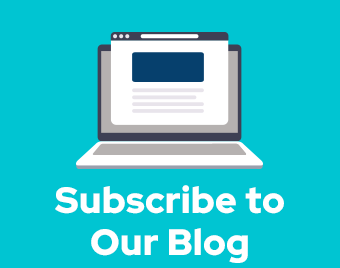More than 6 million adults in the United States have congestive heart failure (CHF), according to the most recent data from the Centers for Disease Control and Prevention, with heart failure costing the nation more than $30 billion annually. Both figures are expected to rise in the coming years, fueled by the “silver tsunami” of aging baby boomers, unhealthy lifestyles taking their toll, and chronic medical conditions like obesity, high blood pressure, and diabetes raising the risk of developing CHF. Since CHF is so prevalent, it's more important than ever to find effective treatment solutions that won't break the bank for patients and that help provide better control over our national healthcare spending. Enter remote patient monitoring for congestive heart failure.
Before we dive into why remote patient monitoring (RPM) is a smart solution for CHF management, let's gain a better understanding of this dangerous condition.
Congestive Heart Failure: An Overview
Patients who suffer from congestive heart failure experience a slue of concerning symptoms that can severely affect and interrupt their daily lives, often leading to inactivity that can further worsen the disease and its symptoms. Common symptoms can include shortness of breath with basic daily activities, trouble breathing when lying down, fluid retention that causes weight gain and swelling (usually in the feet, legs, or stomach), and general fatigue or weakness. Serious complications associated with CHF include kidney and liver damage, fluid buildup around the lungs, malnutrition, additional heart conditions, and pulmonary hypertension. In addition to the aforementioned medical conditions, other factors that can contribute to developing CHFs include family history/genetics, race or ethnicity, and sex.
For years, the most common treatments for congestive heart failure included medications, reducing sodium intake, limiting liquids, use of devices that filter excess salt and water from the blood, heart transplant, and daily physical activity, coupled with frequent and costly office visits with specialized practitioners. While there is no cure for CHF, effective management can relieve symptoms and improve quality of life for impacted patients. Preventable exacerbations will often lead to expensive hospital stays and invasive treatments for congestive heart failure patients. The good news is that acute exacerbations can be reduced or even prevented with simple, cost-effective technology-based solutions like RPM.
Using Remote Patient Monitoring for Congestive Heart Failure Patients
The importance of quality, ongoing care and support for congestive heart failure patients goes beyond increasing the patient's quality of life and longevity. While this is obviously the top priority, another important aspect of patient care is controlling the astronomical costs associated with treating congestive heart failure patients over the long term. The simple truth is that congestive heart failure is a long-haul diagnosis and is something patients and their medical team will need to work together on controlling continuously.
The increasing utilization of remote patient monitoring has been quietly developing and maturing into something beneficial, especially in the world of cardiology. This adoption has been boosted by evidence supporting the efficacy of RPM, such as published guidance from the American Heart Association supporting the use of RPM for patients with cardiovascular diseases. In fact, cardiology was one of the first specialties to incorporate remote patient monitoring with the introduction of connected cardiac implants.
Thanks to remote patient monitoring, the process of conducting frequent follow-ups with the patient becomes easier and more convenient with the use of cellular- or Bluetooth-connected devices that can record and upload specific vital health data from the patient directly to the practitioner. Typically, this data is sent directly to a secure software platform (e.g., Prevounce) where the practitioner and their healthcare team can view, monitor, and make quick, potentially crisis-averting decisions regarding a patient's health. Overall, the use of remote patient monitoring for congestive heart failure patients can lead to reduced healthcare costs, increase practitioner efficiency, help patients stay healthier for longer, and other benefits for the practitioner and patient.
Practitioner Benefits: Remote Patient Monitoring for Congestive Heart Failure
From seeing patient after patient, completing documentation, performing medication management, reviewing imaging and diagnostics, and countless other duties, it's safe to say that doctors are overwhelmingly busy. Practitioners are tasked with delicately balancing all the above while ensuring patients are cared for to the best of their ability.
To meet the multitude of demands, practitioners regularly leverage technological tools that can help their practice run more efficiently. Remote patient monitoring is a particularly great solution for managing chronic health conditions like congestive heart failure. Specifically, practitioners benefit from the use of remote patient monitoring in several different ways. This includes the following:
- Increased practice efficiency — Practitioners can see accurate, real-time patient health information through connected devices and a user-friendly software platform.
- Automated documentation — Patient physiologic data can be collected and added directly to the patient's health record.
- Better care oversight — Since patient physiologic data is collected and sent directly to their care team, concerning measurements can be acted upon promptly, avoiding unnecessary patient trips to the office, condition exacerbation, or even hospitalizations.
- Financially lucrative — RPM is one of the higher reimbursing Medicare care management programs, making it an effective way for practitioners to add supplemental, non-visit revenue. This is especially beneficial as reimbursement remains under pressure.
The versatility of remote patient monitoring allows practitioners to choose from an array of connected and nonconnected devices that will directly monitor certain aspects their patient's health. For patients with congestive heart failure, effective remote patient monitoring devices for congestive heart failure patients might include a connected blood pressure monitor and a weight scale to measure fluctuations in the patient's weight that could indicate fluid retention.
Patient Benefits: Remote Patient Monitoring for Congestive Heart Failure
For patients, congestive heart failure can be a devastating diagnosis. With the help of their practitioner and an effective treatment regimen, patients can better manage and reduce the symptoms associated with congestive heart failure and live out a quality life. With remote patient monitoring, adhering to a CHF treatment plan can be easier and more convenient, allowing patients to connect with their practitioner from the comfort of their home or wherever they may be. This direct link can help them feel more comfortable and confident knowing their vital health information is being sent and reviewed in near real time, providing them with a safety net that will help reduce the number of trips to the office and avoid costly hospital admissions.
Additionally, the engaging experience associated with the patient end of remote patient monitoring can provide patients with the necessary information and tools to take ownership over their health, often leading them to make healthier lifestyle choices.
Pairing Remote Patient Monitoring and Chronic Care Management
While the use of remote patient monitoring is playing an essential role in helping manage congestive heart failure, practitioners are finding RPM is also advantageous in treating the multitude of other chronic health conditions that plague their patients. RPM and chronic care management (CCM) can go hand in hand, helping to provide an effective means of managing the symptoms associated with not only CHF but also other conditions such as asthma, diabetes, hypertension, and obesity. Often, these other chronic health conditions can contribute to congestive heart failure complications, making the use of remote patient monitoring even more valuable in keeping these patients healthier. Even better, when a chronic care management program incorporates remote patient monitoring, reimbursement increases, making adding CCM to an RPM program a win-win for practitioners and patients.
Remote Patient Monitoring for the Long Haul
The growing prevalence and increasing costs associated with congestive heart failure are great reasons to take advantage of the healthcare industry's big shift towards expanding telehealth services. Specifically, it seems that remote patient monitoring is one virtual service that is here to stay. With buy in from Medicare, other payers, and the federal government, the healthcare system seems to be invested in keeping services like remote patient monitoring around. As we have discussed, RPM is cost effective, good for patients, and good for practitioners. More specifically, congestive heart failure patients and their practitioners will find that RPM can be a gamechanger, enabling practice efficiency and consistent, fair payer reimbursements while providing patients with convenience and peace of mind, reducing their out-of-pocket care costs, and potentially decreasing the frequency of office visits and hospitalizations.






